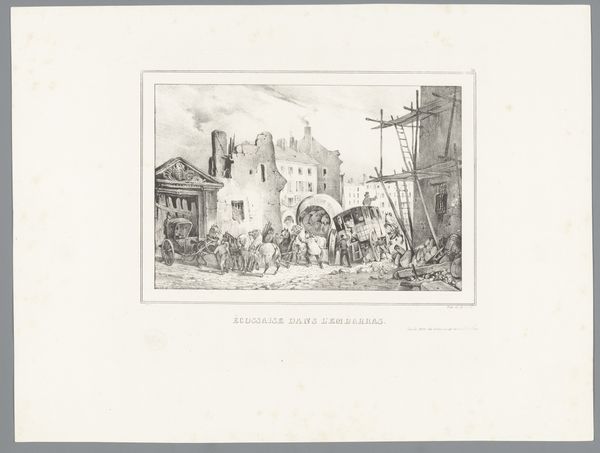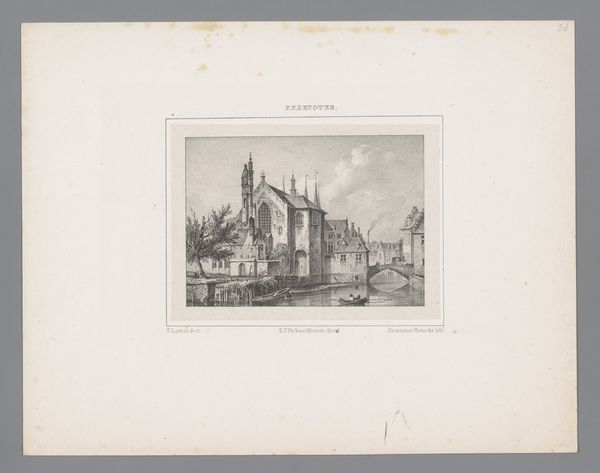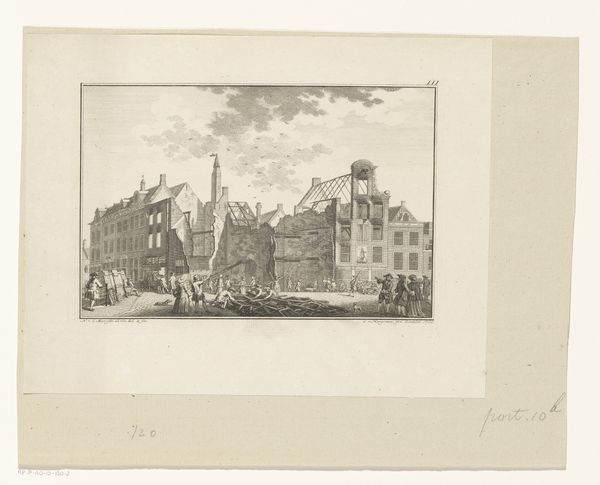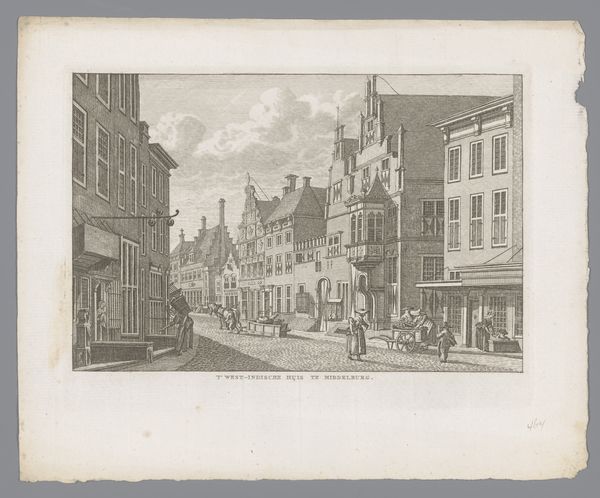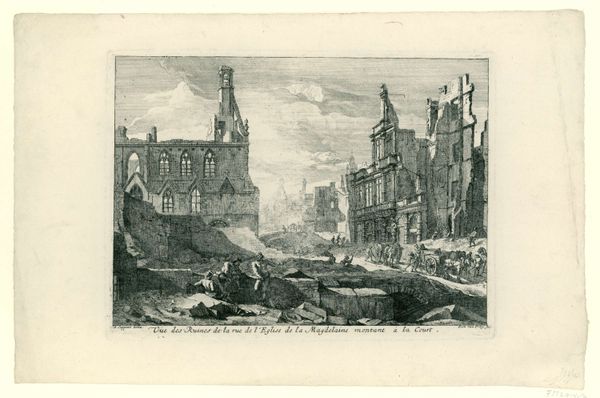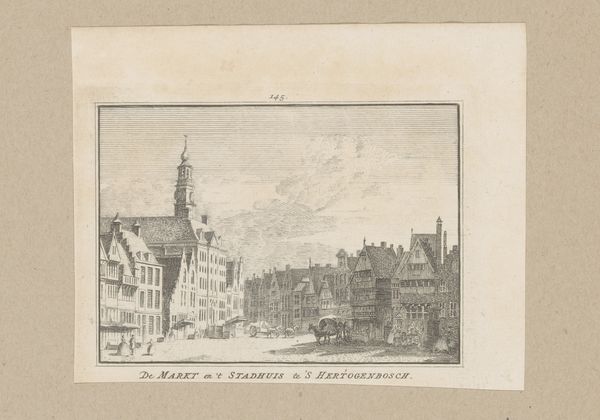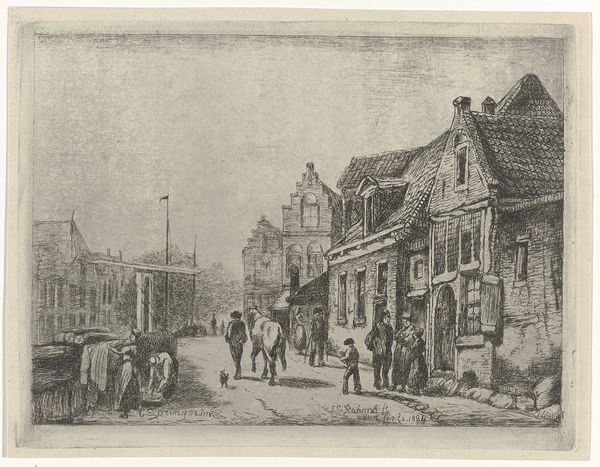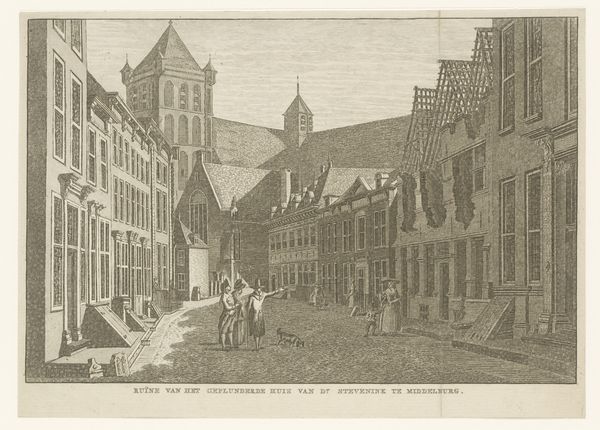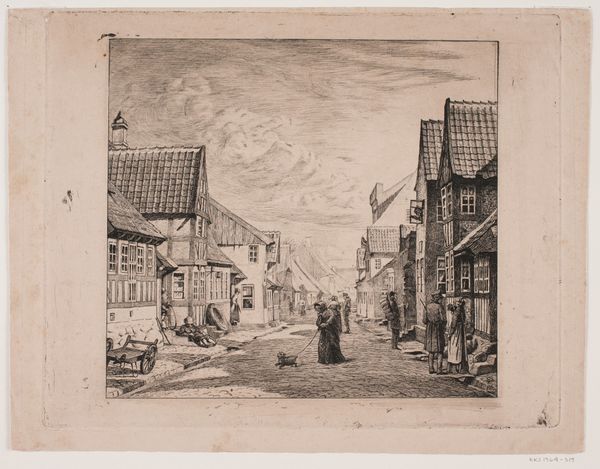
drawing, lithograph, print, etching, paper
#
drawing
#
dutch-golden-age
#
lithograph
# print
#
etching
#
landscape
#
paper
#
cityscape
#
realism
Dimensions: height 168 mm, width 220 mm
Copyright: Rijks Museum: Open Domain
This print of the Goudsbloemgracht in Amsterdam was made by Bernhard Feit in 1855. It's a lithograph, made by drawing on a flat stone surface with a greasy crayon, then using oil and water to transfer the image onto paper. Lithography was a relatively new medium at the time, allowing for the mass production of images. Its widespread adoption changed the art world and visual culture. Looking closely, you can see how Feit used the lithographic process to capture the textures of brick and stone. Notice also the lines indicating reflections on the water's surface, and how the artist captured the depth of the scene through careful shading. Consider, too, the social context. Prints like this one were made for a growing middle class, eager to document and consume images of their cities. The efficiency of lithography enabled artists to respond to this demand. This artwork challenges the traditional hierarchy between fine art and commercial reproduction, demonstrating how new technologies can democratize image-making and consumption.
Comments
No comments
Be the first to comment and join the conversation on the ultimate creative platform.


